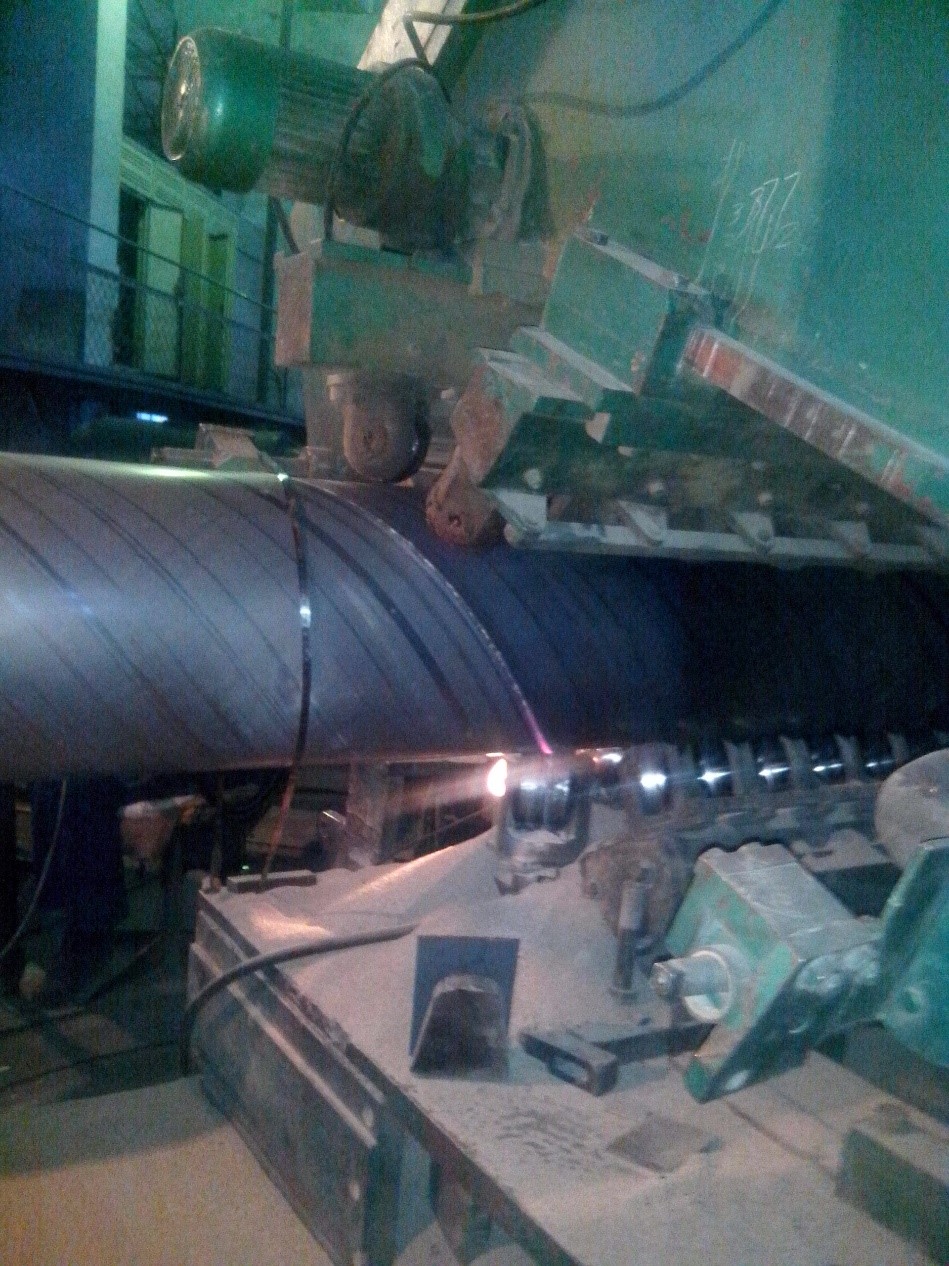Following sub arc welding on the inside and outside of a helically welded pipe, the pipe must undergo inspection to be prepared for further processing or service in the field. This preparation step includes rigorous inspection and testing procedures, repair of defects, and application of anti-corrosion coatings before the pipe enters service.

Post-weld Scarfing in helical sub arc welding
Traditionally, post-weld inspection is done manually by an operator who walks around the exterior of the pipe or crawls through it as part of an offline process. The operator is responsible for identifying any weld undercut, incorrect weld wetting angles, or insufficient or excessive weld bead material from the process. It is not only time consuming, but it relies on the operator to be consistent to be able to catch all defects in the product.
A better solution is to use automatic inspection equipment such as the Xiris WI3000 weld inspection system, which can profile the entire weld bead after the flux has been removed or fallen away to detect problems sooner in the process. Usually used as an inline inspection tool post-weld, the WI3000 can also be used to provide the operator with feedback to make corrections reducing additional defects while marking the location of a defect to expedite the repair process.

Laser Bead Profile of a Weld Bead with a Too Steep Slope on the Right Side of the Bead
Information from the laser sensor is transmitted to a single image-processing system, allowing the operator to identify and control the welding parameters. The end result is a better, more objective measurement of the weld bead inspection process in advance of use of the pipe in the field.
Xiris Automation offers a full suite of products for your helical sub arc welding (HSAW) process. From the control and quality assurance of the initial forming and tacking stage by the XVC-1000, through the remote monitoring of process parameters during full-seam sub arc welding by the XVC-S, and the post-welding and post-scarfing inspection by the WI-3000, Xiris provides operators with the tools they need to prepare the highest-quality products they can.
To learn more about how Xiris Automation’s full suite of turnkey solutions can improve the quality and yield of your HSAW manufacturing process, contact one of our technical specialists today.



.png)


